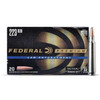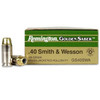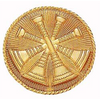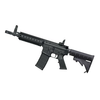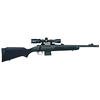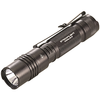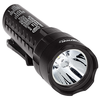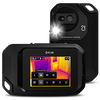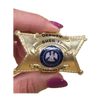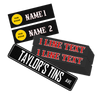Details
Forest Lite is a single jacket, circular woven, 100% high tenacity polyester hose intended for forestry and wildfire firefighting.
It can be coupled with NH, NPSH, special threads or 1/4 turn. Field detachable couplings are also available for 1″ hose. Forest Lite meets U. S. Forest Service standard F-187.- Service Pressure: 300 psi
- Acceptance Pressure: 600 psi
- Burst Pressure: 900 psi
Forest Lite is a single jacket, polyurethane-lined lightweight hose intended for use in wildland fire suppression. It meets or exceeds NFPA 1961 Fire Hose Standard, 2007 edition.
Jacket Construction: The jacket is virgin spun high tenacity polyester. The outer jacket is thoroughly impregnated with a polymer compound to provide superior resistance to chemicals, abrasion and ultraviolet light. Compound is heat set at 250º F.
Lining: The thermoplastic lining shall be a single-ply extruded tube and shall be unaffected by ozone. The finished form shall be free of pits or other imperfections and shall have a smooth finish. No reclaimed material shall be used. The tensile strength of the liner shall not be less than 2000 psi, with an maximum elongation of 10 percent.
Adhesion: The adhesion between the liner and the inside jacket is such that the rate of separation of a 1.5" wide strip cut transversely, shall not be greater than 1" per minute over a period of ten minutes, under a weight of 12 pounds.
Accelerated Aging: Lining specimens subjected to an exposure of 158º F +/- 3.6º F, for a duration of 96 hours shall be conditioned to ASTM D 573, Standard Test Method for Rubber – Deterioration in an Air Oven. Then, the specimens shall be tested to ASTM D4112, Standard Test Methods for Vulanized Rubber and Thermoplastic Elastomers- Tension, Method A. Under evaluation, the tensile and elongation properties of the liner shall not be less than 75% of their initial values.
Couplings: Expansion-type in either hardcoat anodized aluminum or brass are available. NST couplings are standard; one quarter turn couplings are available by special order. All couplings meet NFPA 1963, Standard for Fire Hose Connections, 2009 edition.
Hydrostatic Tests:
- Pressure: 300 psi
- Proof Test: 600 psi
- Burst Pressure: 900 psi
Abrasion Resistance: Outer jacket must withstand a minimum of 2,800 cycles on the Taber Abraser with no abrasion through the filler yarn. H-22 Calibrade wheel to be used with 1,000 gram load on each wheel. The hose shall also pass Underwriters Laboratory Abrasion Test in UL 219, Lined Fire Hose for Interior Standpipes.
Cold Resistance: Hose shall have the capability of use down to -40º F. There shall be no apparent damage to jacket or lining when subjected to the following cold bend test: A 3-foot section of hose shall be exposed to a temperature of -40º F for a period of 24 hours. At the end of the exposure period, the hose shall be rapidly bent 180 degrees back onto itself, first one way and then the other. Following this procedure, the hose shall not leak, nor show any damage to the jacket when subjected to the burst pressure shown above.
Heat Resistance: The ability of the hose to resist heat shall be verified using the test procedures defined in UL 19, Lined Fire Hose and Hose Assemblies, Heat-Resistance Test; FM Class Number 2111, Factory Mutual Appproval Standard for Fire Hose, Heat Resistance.
Ozone Resistance: Hose liner shall show no signs of cracking under 7 power magnification when tested in accordance with ASTM D1149-86, Standard Test Methods for Rubber DeteriorationCracking in an Ozone Controlled Environment (samples prepared in accordance with ASTM D518-86, Standard Test Method for Rubber Deterioration-Surface Cracking, procedure C). Specimen shall be elongated at 15% for 120 hours of exposure at 100 pphm ozone at a temperature of 122º F.
Marking: Beginning at a point not less than 5’ ± 6” from each end, each length shall be stenciled in letters at least one inch high with the manufacturer’s identification, country of origin, month and year of manufacture, and the words, “Service Test to 300 p.s.i. per NFPA 1962.”
Weights and Coil Sizes:
| 1" Diameter Hose | Weight | Coil Size |
| 50' | 4 lbs | 11" |
| 100 | 8 lbs | 22" |


